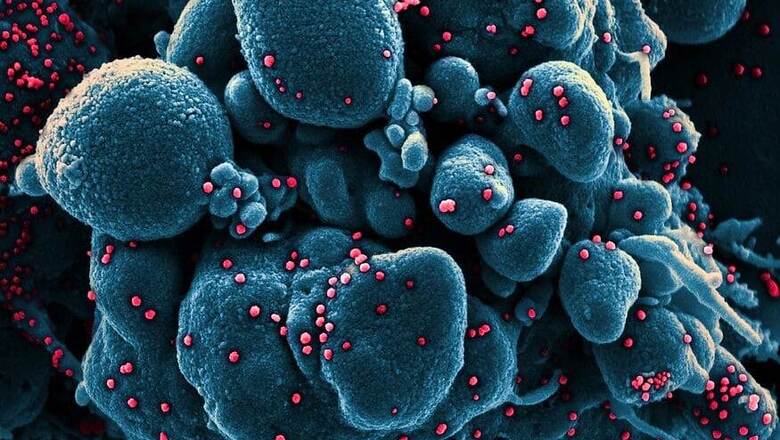
views
It has often been said, mostly by the World Health Organization, that Coronavirus, or COVID19 is not airborne. In fact, on March 29, they shared another guidance on Twitter which says COVID 19 is not airborne. However, a new study suggests that they have found proof Coronavirus is airborne and can linger in the room much after a patient or someone infected has left. The study done by scientists from the University of Nebraska Medical Center (UNMC), the Nebraska Medicine network and the National Strategic Research Institute (NSRI) found traces of the virus in the rooms and also outside in the hallways at the University of Nebraska Medical Center, where confirmed COVID19 patients were put in isolation. The study, Transmission Potential of SARS-CoV-2 in Viral Shedding Observed at the University of Nebraska Medical Center" studied the rooms of 13 patients in isolation.
“The study found high levels of the virus contamination by PCR on commonly used surfaces and in the air of rooms of COVID-19 patients. Air samplers from hallways outside of rooms where staff were moving in and out of doors were also positive. The study suggests that COVID-19 patients, even those who are only mildly ill, may create aerosols of virus and contaminate surfaces that may pose a risk for transmission," says the University of Nebraska Medical Center. The study confirms that commonly used items such as smartphones and personal items, as well as toilet facilities and the air samples exhibited evidence of the genetic material from the virus. This is perhaps the first real indication that SARS-CoV-2 material is more widely disseminated in the environment than perhaps first imagined.
The researchers believe that these findings only reaffirm the risks that the COVID19 virus poses, particularly to health workers who must wear the full protective gear at all times when caring for Coronavirus patients. “These findings indicate that disease might be spread through both direct (droplet and person-to-person) as well as indirect contact (contaminated objects and airborne transmission) and suggests airborne isolation precautions could be appropriate," says the study. “Our findings show how important it is for health care workers providing direct care to these patients to take enhanced transmission precautions. That means wearing the proper personal protective equipment, using negative air pressure rooms for these patients whenever possible and being mindful about the method of entering and exiting these rooms," says John Lowe, PhD, vice chancellor for Inter-professional Health Security Training and Education, as reported by the University of Nebraska Medical Center.
"We are being very careful in the care of patients with COVID-19 or patients suspected to have COVID-19, and the study doesn't change very much in the precautions that people should take," said Mark Rupp, M.D., chief of the UNMC Division of Infectious Diseases. At this time, medical authorities around the world are urging people to keep a distance of at least 1 meter from others, wash your hands with soap regularly, use alcohol based hand sanitizers, disinfect surfaces you touch regularly and avoid touching your face or rubbing your eyes, as methods of preventing the spread of the Coronavirus.
This revelation comes soon after scientists from the Renmin Hospital of Wuhan University and the Wuhan Institute of Virology of the Chinese Academy of Science reported that they have discovered virus genetic material in stool samples and rectal swabs from some patients, suggesting that the COVID19 may also potentially transmit via the digestive tract.
Just a few days ago, the WHO had again reiterated that the COVID19 virus is not airborne and can only be transmitted via droplets of cough, for instance, from someone who is infected.
FACT: #COVID19 is NOT airborne. The #coronavirus is mainly transmitted through droplets generated when an infected person coughs, sneezes or speaks.To protect yourself:-keep 1m distance from others-disinfect surfaces frequently-wash/rub your ????-avoid touching your ???????????? pic.twitter.com/fpkcpHAJx7— World Health Organization (WHO) (@WHO) March 28, 2020



















Comments
0 comment